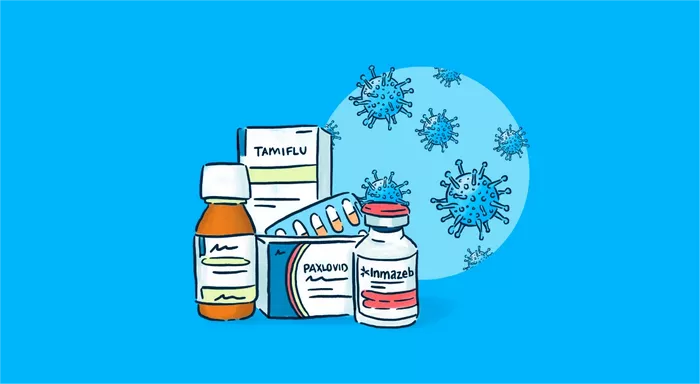Shingles, caused by the reactivation of the varicella-zoster virus—the same virus that causes chickenpox—can be an excruciatingly painful condition. The hallmark symptom of shingles is a blistering rash that typically appears on one side of the body, often accompanied by intense burning, itching, and stabbing pain. Managing this pain is paramount to improve the quality of life for individuals afflicted with shingles. While prescription medications are available, many people seek relief through over-the-counter (OTC) options. In this article, we will explore some of the best OTC medicines for shingles pain, discussing their effectiveness, safety, and how they work to alleviate discomfort.
Understanding Shingles Pain
Before delving into OTC treatments, it’s crucial to understand the nature of shingles pain. Shingles pain can vary in intensity from mild to severe and may persist long after the rash has healed—a condition known as postherpetic neuralgia (PHN). This lingering pain can significantly impact daily activities and quality of life. It arises from inflammation of nerves beneath the skin due to the viral infection, leading to heightened sensitivity and neuropathic pain.
Analgesics: The First Line of Defense
Analgesics, or pain relievers, are often the first line of defense against shingles pain. These medications work by blocking pain signals to the brain, providing temporary relief from discomfort. Two main types of OTC analgesics are commonly used for shingles pain: acetaminophen and nonsteroidal anti-inflammatory drugs (NSAIDs).
1. Acetaminophen:
Acetaminophen, commonly known by the brand name Tylenol, is a widely used pain reliever and fever reducer. It is often recommended for mild to moderate shingles pain. Acetaminophen works by inhibiting the production of prostaglandins, chemicals in the body that contribute to pain and fever. While generally considered safe when taken as directed, it’s important to avoid exceeding the recommended dosage to prevent liver damage.
2. Nonsteroidal Anti-Inflammatory Drugs (NSAIDs):
NSAIDs, such as ibuprofen (Advil, Motrin) and naproxen (Aleve), are another class of OTC analgesics commonly used to alleviate shingles pain. Unlike acetaminophen, NSAIDs work by reducing inflammation in addition to providing pain relief. This dual mechanism can be particularly beneficial for individuals experiencing swelling and inflammation along with pain. However, NSAIDs may cause gastrointestinal irritation and increase the risk of bleeding, especially in older adults or those with a history of stomach ulcers or cardiovascular disease.
Topical Treatments: Targeted Relief
In addition to oral medications, topical treatments can offer targeted relief for shingles pain by directly addressing discomfort at the site of the rash. These formulations typically contain active ingredients such as lidocaine or capsaicin, which work by numbing the nerves or desensitizing them to pain signals.
1. Lidocaine Cream/Gel:
Lidocaine is a local anesthetic that blocks nerve signals in the body. It is available in various forms, including creams, gels, and patches, and is commonly used to relieve pain associated with shingles. When applied to the affected area, lidocaine temporarily numbs the skin, providing relief from burning, itching, and stabbing sensations. It is important to follow the instructions for application carefully to avoid adverse reactions, such as skin irritation or allergic reactions.
2. Capsaicin Cream:
Capsaicin, the active component in chili peppers, is another topical option for shingles pain relief. Capsaicin works by depleting substance P, a neurotransmitter involved in transmitting pain signals to the brain. While initially causing a burning or stinging sensation, regular use of capsaicin cream can lead to desensitization of nerve fibers, resulting in reduced pain sensitivity over time. It is essential to apply capsaicin cream sparingly and avoid contact with mucous membranes or broken skin to prevent irritation.
Combination Therapies: Maximizing Effectiveness
For individuals experiencing severe or persistent shingles pain, combination therapies involving both oral and topical medications may offer the most effective relief. By targeting pain through multiple mechanisms of action, combination therapies can provide comprehensive pain management while minimizing side effects associated with higher doses of a single medication.
1. Oral Analgesic + Topical Lidocaine:
Combining oral analgesics such as acetaminophen or NSAIDs with topical lidocaine can provide both systemic and localized relief for shingles pain. While oral analgesics address pain from within the body, topical lidocaine targets discomfort at the skin’s surface, providing immediate relief to the affected area.
2. Oral Analgesic + Topical Capsaicin:
Similarly, combining oral analgesics with topical capsaicin cream can offer synergistic pain relief for individuals with shingles. While oral analgesics provide generalized pain relief, capsaicin cream targets specific nerve fibers involved in transmitting pain signals, resulting in enhanced overall pain management.
Considerations and Precautions
While OTC medications can provide effective relief for shingles pain, it’s essential to use them safely and responsibly. Before starting any new medication regimen, individuals should consult with their healthcare provider, especially if they have underlying medical conditions or are taking other medications that may interact with OTC treatments. Additionally, it’s crucial to follow dosing instructions carefully and avoid exceeding recommended doses to prevent adverse effects.
Furthermore, individuals with shingles should be vigilant for signs of complications, such as bacterial skin infections or eye involvement, and seek prompt medical attention if necessary. While OTC medications can help alleviate pain, they do not treat the underlying viral infection responsible for shingles and should be used in conjunction with appropriate antiviral therapy as prescribed by a healthcare provider.
Conclsuion
In conclusion, managing shingles pain requires a multifaceted approach that may include both OTC and prescription medications, along with supportive therapies. By understanding the different options available and working closely with healthcare providers, individuals can find relief from shingles pain and improve their overall quality of life.
























